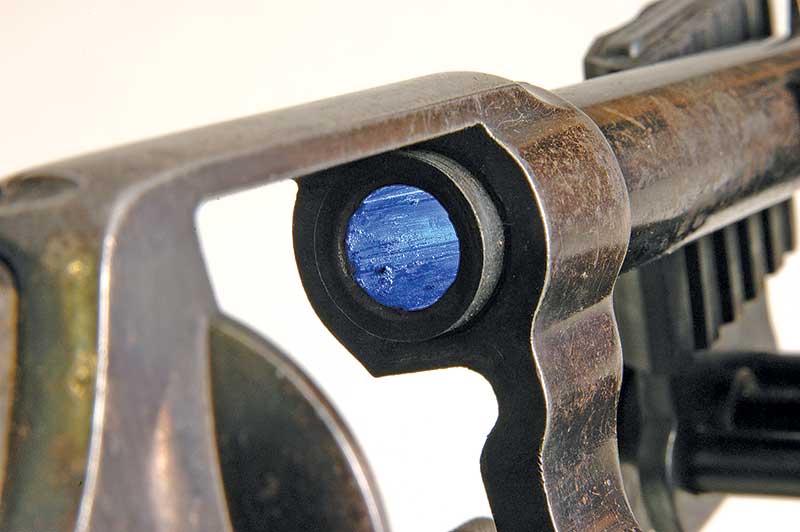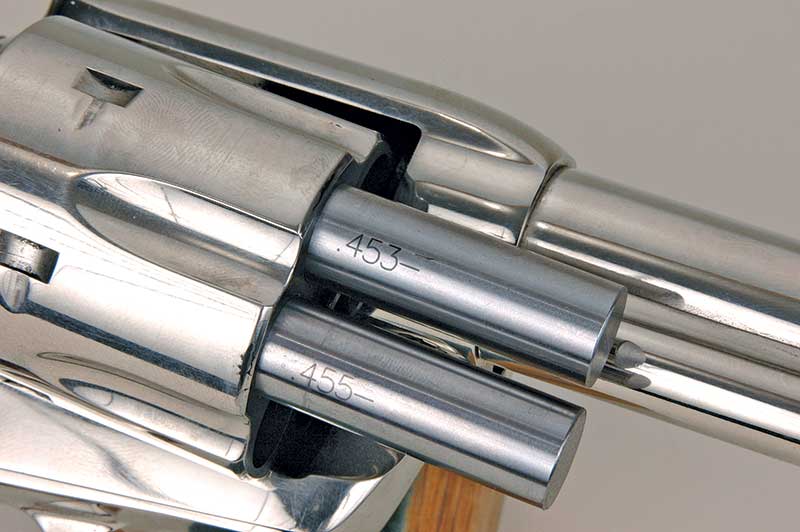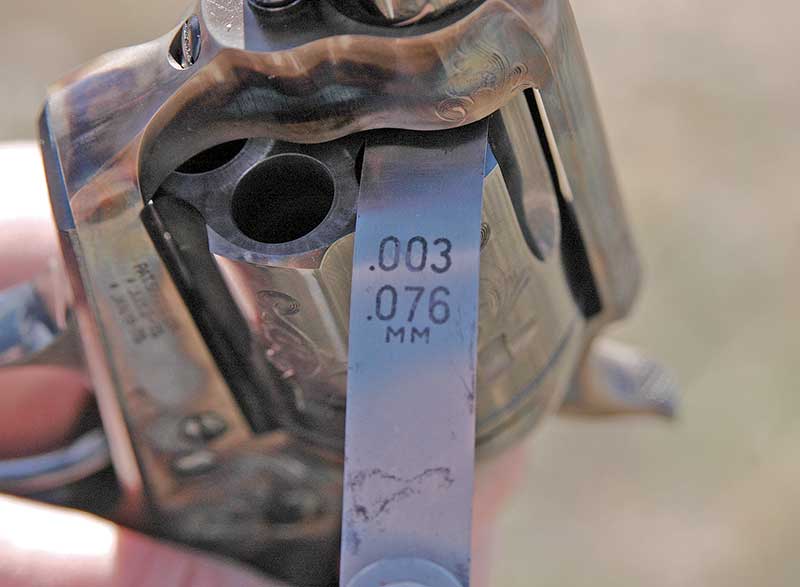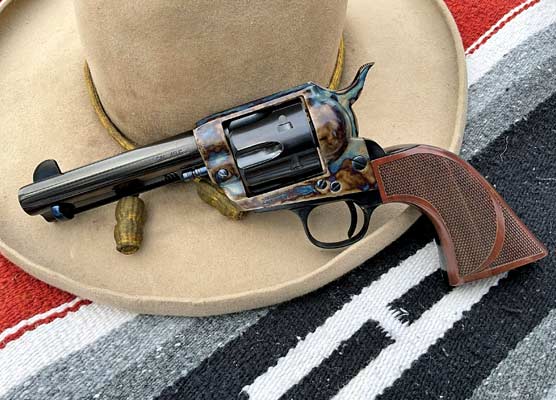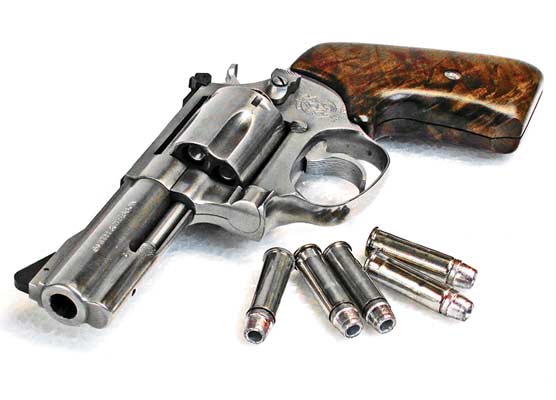More Revolver Accuracy Variables
In the last two issues I’ve detailed how to slug handgun barrels so lead alloy bullets of the proper size will be used in them. However, that’s just one of the factors involved in handgun accuracy — especially revolver accuracy.
Revolver cylinders add about another five to eight dimensions to the mix, depending on how many chambers are there and how uniform they are. Long ago I learned just matching a lead alloy bullet to a revolver barrel’s groove diameter did not insure it would be delivered to the target with precision. For instance, I slugged the barrel of a 1960s vintage Colt SAA .45 right at its nominal .451″. Therefore, I loaded my .45 cast bullets to .451″ and got disappointing groups.
For many years, I just blamed it on the .45 Colt as being a cartridge of inherently poor accuracy. That was nonsense. Finally I figured out the problem was Colt .45s of that vintage (and today) have notoriously large chamber mouths. I just took a break from this keyboard and measured all six chamber mouths of my 1967 vintage Colt SAA .45. — they were all .456″.
If you start a relatively hard .451″ bullet out in a .456″ chamber mouth it’s going to get slammed into the barrel’s forcing cone cocked off its axis. My solution has been twofold. If .45 Colt bullets must be hard (Brinell hardness number 12 or above) then I size them .454″. Conversely, if they can be soft, say of 1-20 tin to lead alloy (BHN of 10) and used at speeds under 1,000 fps, then they can be sized .452″. The pressure of powder ignition will cause softer bullets to obturate or fill the chamber mouths.
Gaps & Cones
Another measurement anyone shooting revolvers should take note of is the gap between the barrel and the cylinder. If it gets too large the revolver will be spitting particles of powder and bullet, which is downright distracting. When excessive, the loss of powder gases will substantially reduce velocity. I’ve actually seen revolvers with large-barrel/cylinder gap deliver good precision, but it’s still a thing to avoid. So what’s excessive? In my opinion, barrel/cylinder gaps should run from .003″ to about .006″. Up to about .009″ isn’t uncommon, and a revolver with gap that large can still be serviceable. Revolvers with gaps larger than that should be taken to a good gunsmith or returned to their manufacturers for repair.
There’s one other important factor in revolver accuracy hard to quantify. That is the smoothness and angle of the barrel’s forcing cone. The forcing cone of a revolver barrel should act like a precision funnel, allowing the bullet to enter it, and then center it with the barrel. Forcing cones should not be abrupt or rough, and they often are on newly manufactured revolvers. Heck, they often are on vintage ones too! As the photo shows, my Colt New Service .38 WCF (.38-40) has no forcing cone at all. The rifling comes right to the butt-end of the barrel. Rough revolver forcing cones are evident by the amount of lead fouling accumulated in them.
The Fix
Brownells, the gunsmith tool and goodie supplier, sells forcing cone reaming kits. I’m told by those who know more than me the optimum forcing cone angle is 11 degrees. My gunsmith buddy Tom Sargis has that kit and has cut many of my revolvers with it. With some I’ve noted a definite increase in precision. With others I’ve noticed no change at all. What I have never encountered was a decrease in accuracy after a revolver’s forcing cone was cut and smoothed.
While on the subject of measuring tools, to check cylinder chamber mouths I bought a set of plug gauges from machine a tool supply outfit called ENCO. There are 250 in a set, in .001″ increments from .250″ to .500″ and cost me less than a hundred bucks delivered to my door. As for measuring barrel/cylinder gaps, the common feeler gauges used for setting spark plugs are available at any automotive parts store and work just fine.
If you’re a handloader, especially one using lead alloy bullets, and you take note of your revolver’s dimensions and prepare loads accordingly, your results will almost always be very satisfying.

